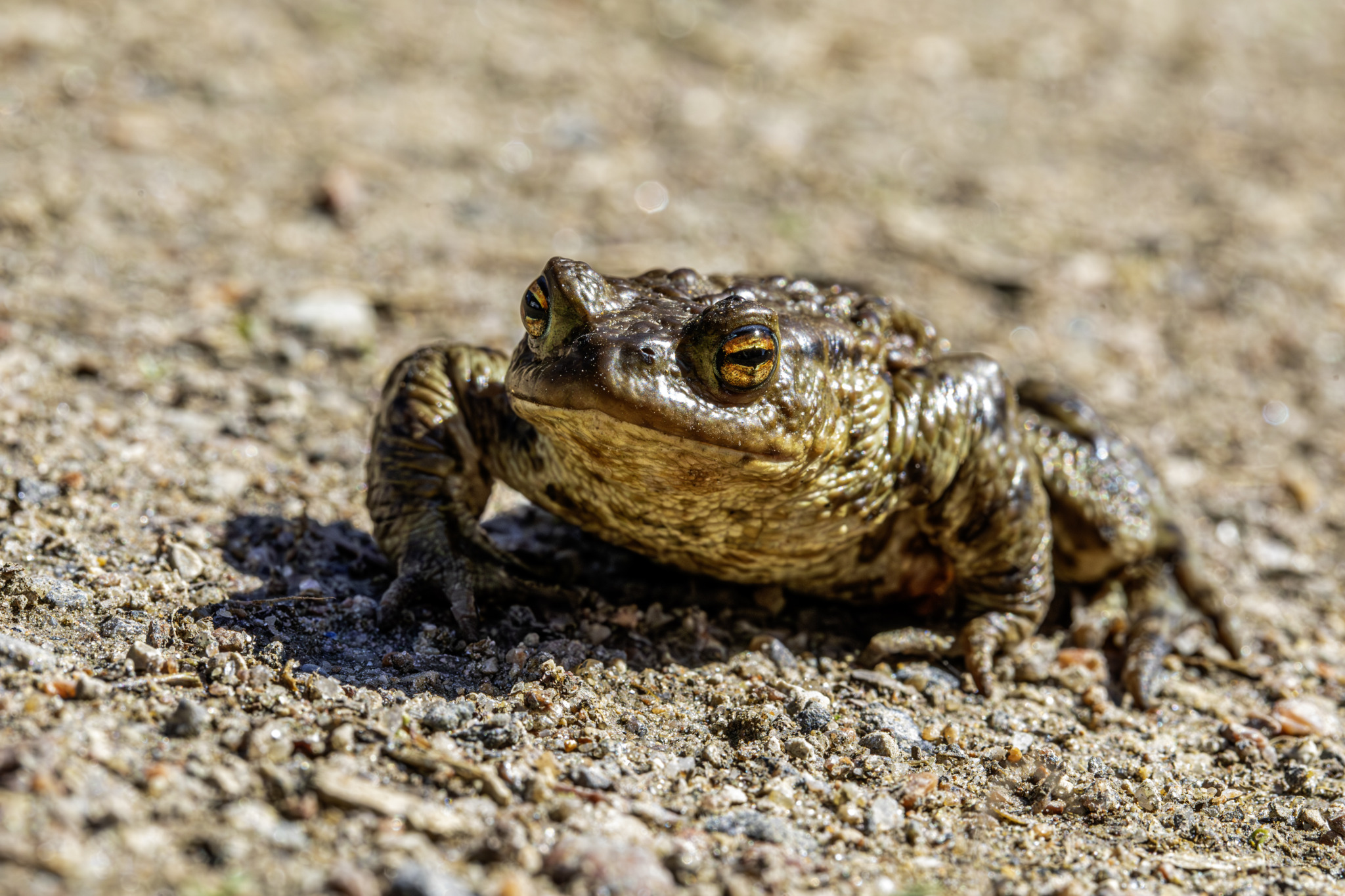The Common Frog, also known as the European Common Frog or simply the Common Frog (Rana temporaria), is a widespread and familiar amphibian species found throughout Europe. Here are some key features and characteristics of the Common Frog:
- Appearance: Common Frogs have a relatively smooth and moist skin, which varies in color from shades of brown, olive-green, grey, or reddish-brown, often with darker markings. They have a robust body with long hind legs, well-suited for jumping, and shorter forelimbs. Their eyes have a horizontal pupil and are positioned on the sides of their head.
- Size: Adult Common Frogs typically measure between 6 to 9 centimeters (2.4 to 3.5 inches) in length, with females usually being larger than males.
- Habitat: Common Frogs are highly adaptable and can be found in a variety of terrestrial and aquatic habitats, including forests, grasslands, wetlands, ponds, lakes, and gardens. They are often associated with freshwater bodies where they breed during the spring and summer months.
- Lifecycle: Common Frogs undergo a complex lifecycle, transitioning through distinct stages from egg to tadpole to adult frog. Breeding typically occurs in shallow freshwater bodies such as ponds, where females lay clusters of eggs attached to submerged vegetation. The eggs hatch into tadpoles, which undergo metamorphosis over several weeks to months, eventually developing into juvenile frogs and then adult frogs.
- Diet: Common Frogs are carnivorous and primarily feed on a diet of small invertebrates, including insects, spiders, worms, slugs, and snails. They use their long, sticky tongue to capture prey, which they swallow whole.
- Behavior: Common Frogs are primarily nocturnal and are most active during the evening and nighttime hours. During the day, they seek shelter in damp, shady areas such as under vegetation or rocks. They are excellent jumpers and swimmers, using their powerful hind legs for propulsion both on land and in water.
- Conservation: While the Common Frog is considered to be of least concern in terms of conservation status, it may face threats from habitat loss, pollution, climate change, and diseases such as chytridiomycosis. Conservation efforts aimed at preserving and restoring freshwater habitats, reducing pollution, and raising awareness about the importance of amphibians are crucial for their long-term survival.
Overall, the Common Frog is a familiar and ecologically important amphibian species, valued for its role in controlling insect populations and serving as an indicator of environmental health in freshwater ecosystems.
Visited 851 times, 4 visit(s) today
Views: 1109
Subscribe to the newsletter:
